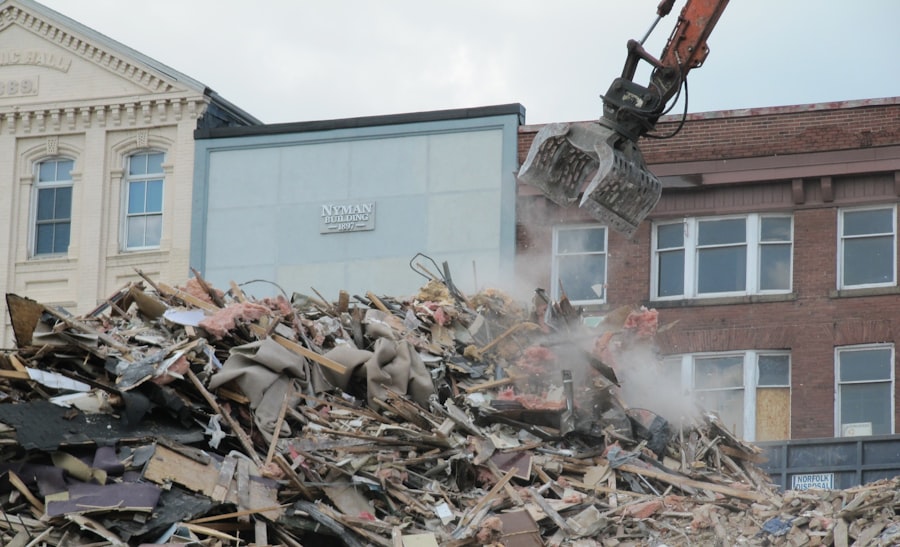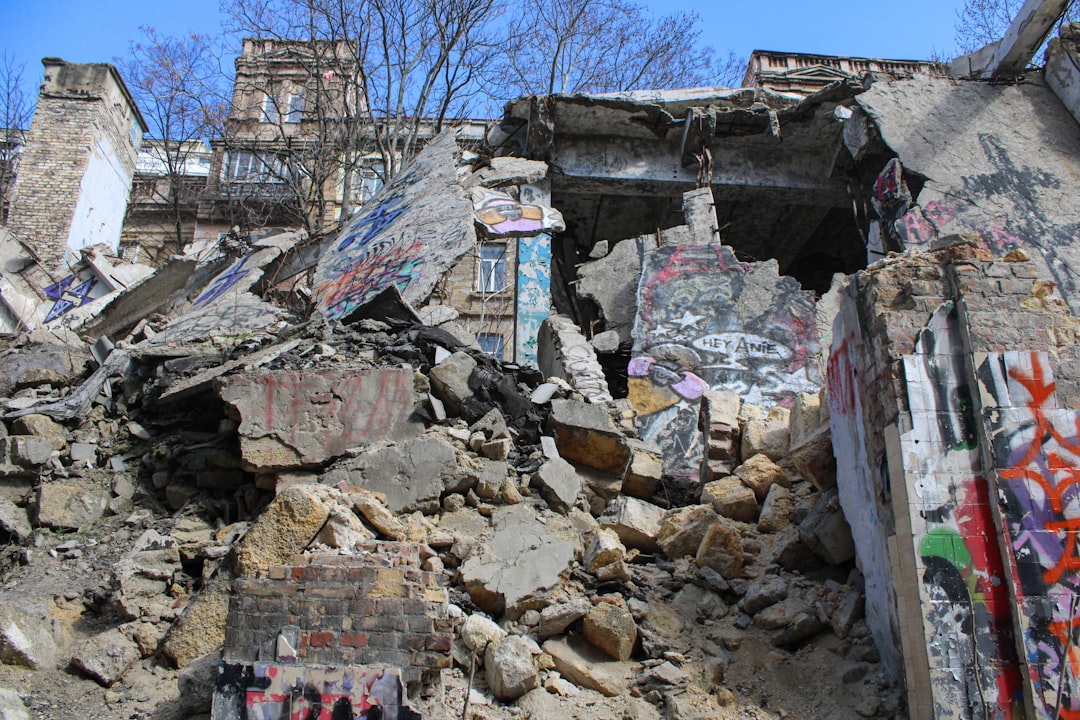The Drake Passage, a body of water located between the southern tip of South America and Antarctica, is known for its tumultuous seas and unpredictable weather.
Recently, an earthquake struck this area, drawing attention from scientists, local authorities, and the global community.
The event not only highlighted the geological volatility of the region but also raised questions about the potential consequences for the surrounding ecosystems and human activities. As the world becomes increasingly aware of seismic events and their implications, understanding the specifics of this earthquake is crucial. The Drake Passage earthquake serves as a reminder of the dynamic nature of our planet.
With tectonic plates constantly shifting beneath the surface, regions like the Drake Passage are often at risk of seismic activity. This particular earthquake has prompted discussions about preparedness, response strategies, and the broader implications of such natural disasters. As researchers delve into the details surrounding this event, they aim to provide insights that could help mitigate future risks and enhance safety measures for those living in or visiting the area.
Key Takeaways
- Drake Passage earthquake occurred in a remote area of the Southern Ocean, between South America’s Cape Horn and the South Shetland Islands of Antarctica.
- The earthquake had a magnitude of 7.0 and occurred at a depth of 10 kilometers, making it a significant event in the region.
- The impact on surrounding areas was minimal due to the remote location of the earthquake, with no reports of damage or casualties.
- While there was no immediate tsunami threat, the potential for a tsunami in the future remains a concern for coastal areas in the region.
- Historical earthquake activity in the Drake Passage indicates a pattern of moderate to large earthquakes occurring in the area, highlighting the need for continued monitoring and research efforts.
Location and Magnitude of the Earthquake
The recent earthquake in the Drake Passage occurred at a depth of approximately 10 kilometers, with its epicenter located near the South Shetland Islands. This area is characterized by its complex tectonic setting, where the South American Plate meets the Scotia Plate. The magnitude of this earthquake was recorded at 6.5 on the Richter scale, making it a significant event in terms of seismic activity.
Such a magnitude indicates that the earthquake was capable of causing considerable shaking and potential damage, particularly in nearby regions. The geographical positioning of the Drake Passage contributes to its susceptibility to earthquakes. The convergence of tectonic plates creates a dynamic environment where stress accumulates over time, eventually leading to seismic events.
The recent earthquake serves as a stark reminder of this geological reality, emphasizing the need for ongoing monitoring and research in the area. Understanding the specifics of this earthquake’s location and magnitude is essential for assessing its potential impact on both human activities and natural ecosystems.
Impact on Surrounding Areas

The impact of the Drake Passage earthquake was felt across various surrounding areas, particularly among communities situated along the coasts of South America and Antarctica. Reports indicated that residents in southern Chile experienced noticeable tremors, prompting concerns about structural integrity and safety.
The fear and anxiety that accompany such seismic events can linger long after the shaking has ceased. In addition to human impacts, the earthquake also posed risks to marine life and ecosystems in the region. The Drake Passage is home to diverse species, including whales, seals, and various fish populations.
The disturbance caused by seismic activity can affect these organisms’ behaviors and habitats. Researchers are particularly interested in understanding how such events influence marine ecosystems, as changes in underwater topography or water temperature can have cascading effects on biodiversity.
Potential Tsunami Threat
| Location | Probability | Impact |
|---|---|---|
| Coastal Area A | High | Severe |
| Coastal Area B | Medium | Moderate |
| Coastal Area C | Low | Minimal |
Following the earthquake in the Drake Passage, concerns arose regarding a potential tsunami threat. Tsunamis are often triggered by undersea earthquakes, especially those occurring at significant depths or near tectonic plate boundaries. Fortunately, experts quickly assessed that this particular earthquake was unlikely to generate a tsunami due to its depth and location.
However, the mere possibility of such an event underscores the importance of preparedness and monitoring in coastal regions. Tsunami warnings are typically issued based on specific criteria, including magnitude, depth, and proximity to populated areas. In this case, while no tsunami was generated, local authorities remained vigilant in their monitoring efforts.
The potential for future seismic events necessitates ongoing education and awareness campaigns to ensure that communities are prepared for any eventuality. Understanding tsunami risks is crucial for coastal populations, particularly in regions like the Drake Passage that are prone to geological activity.
Historical Earthquake Activity in the Drake Passage
The Drake Passage has a long history of seismic activity, with numerous earthquakes recorded over the years. This region’s geological complexity makes it a hotspot for tectonic movements, resulting in both minor tremors and significant seismic events. Historical data indicates that earthquakes in this area can vary widely in magnitude and impact, with some causing considerable damage while others go largely unnoticed.
Studying historical earthquake activity in the Drake Passage provides valuable insights into patterns and trends that can inform future preparedness efforts. By analyzing past events, researchers can identify potential risks and develop models to predict future seismic activity. This knowledge is essential for local authorities and communities as they work to enhance their resilience against natural disasters.
Response from Local Authorities

In the wake of the Drake Passage earthquake, local authorities swiftly mobilized to assess the situation and ensure public safety. Emergency response teams were deployed to monitor affected areas and provide assistance where needed. Communication channels were established to keep residents informed about safety measures and any potential aftershocks.
The prompt response from local authorities demonstrated their commitment to safeguarding communities in the face of natural disasters. Additionally, local governments initiated assessments of infrastructure to determine any damage caused by the earthquake. While initial reports indicated minimal structural issues, ongoing evaluations were necessary to ensure that buildings and facilities remained safe for public use.
The collaboration between emergency services, government agencies, and scientific organizations played a crucial role in managing the aftermath of the earthquake effectively.
Seismic Activity in the Southern Ocean
The Southern Ocean is characterized by its unique geological features and active tectonic processes. This region experiences frequent seismic activity due to its position along major tectonic plate boundaries. The Drake Passage is no exception; it serves as a critical area for understanding seismic patterns in the Southern Ocean.
Researchers continue to study this region to gain insights into how tectonic movements influence not only earthquakes but also oceanic currents and climate patterns. Seismic activity in the Southern Ocean has implications beyond immediate geological concerns. It can affect marine ecosystems, influence weather patterns, and even contribute to climate change discussions.
As scientists gather data on seismic events like the recent earthquake in the Drake Passage, they aim to build a comprehensive understanding of how these phenomena interact with broader environmental systems.
Research and Monitoring Efforts in the Region
Research and monitoring efforts in the Drake Passage have intensified in response to recent seismic activity. Scientists are utilizing advanced technologies such as seismographs and satellite imagery to track tectonic movements and analyze their potential impacts. These efforts are crucial for developing early warning systems that can alert communities to impending seismic events.
Collaboration among international research institutions has become increasingly important in this context. By sharing data and resources, scientists can enhance their understanding of seismic activity in the region and improve predictive models. Ongoing research initiatives aim not only to monitor earthquakes but also to explore their connections with climate change and other environmental factors.
The Connection Between Earthquakes and Climate Change
The relationship between earthquakes and climate change is an emerging area of research that has garnered attention from scientists worldwide. While earthquakes are primarily driven by geological processes, some studies suggest that climate change may influence seismic activity indirectly. For instance, melting glaciers can alter stress distributions on tectonic plates, potentially triggering earthquakes in certain regions.
In the context of the Drake Passage, understanding this connection is vital for assessing future risks. As climate change continues to impact global weather patterns and sea levels, researchers are keen to explore how these changes may affect seismic activity in sensitive areas like the Southern Ocean. This interdisciplinary approach highlights the need for comprehensive studies that consider both geological and environmental factors.
Safety Precautions for Future Earthquakes in the Area
Given the history of seismic activity in the Drake Passage, implementing safety precautions for future earthquakes is essential for protecting communities and ecosystems alike. Local authorities are encouraged to develop comprehensive emergency response plans that include evacuation routes, communication strategies, and public education initiatives. These measures can help ensure that residents are prepared for potential seismic events.
Additionally, building codes should be reviewed and updated to enhance structural resilience against earthquakes. Retrofitting older buildings and infrastructure can significantly reduce vulnerability during seismic events. Community engagement is also crucial; educating residents about earthquake preparedness can empower them to take proactive measures to safeguard themselves and their families.
Conclusion and Future Outlook
The recent earthquake in the Drake Passage serves as a poignant reminder of nature’s power and unpredictability. As scientists continue to study this region’s seismic activity, they aim to enhance understanding and preparedness for future events. The collaboration between researchers, local authorities, and communities will be vital in developing effective strategies for mitigating risks associated with earthquakes.
Looking ahead, ongoing research efforts will likely focus on improving predictive models for seismic activity while also exploring connections between earthquakes and climate change. As our understanding deepens, it is hoped that communities will be better equipped to face future challenges posed by natural disasters in this geologically active region. The lessons learned from this earthquake will undoubtedly shape future policies and practices aimed at safeguarding lives and preserving ecosystems in the Drake Passage and beyond.
Today, the Drake Passage experienced a significant earthquake, drawing attention to the seismic activity in this remote region. For those interested in understanding more about the geological dynamics and the potential implications of such events, a related article on MyGeoQuest provides valuable insights. This article delves into the tectonic movements and historical seismic activity in the area, offering a comprehensive overview of what might be expected in the future. To explore this topic further, you can read the full article by visiting MyGeoQuest’s detailed analysis.
WATCH NOW! Drake Passage: Earth’s Deadliest Waters Revealed
FAQs
What is the Drake Passage?
The Drake Passage is the body of water between the southern tip of South America and the northern tip of the Antarctic Peninsula. It is known for its rough seas and strong winds.
What is an earthquake?
An earthquake is the shaking of the surface of the Earth resulting from a sudden release of energy in the Earth’s lithosphere that creates seismic waves.
Was there an earthquake in the Drake Passage today?
As of now, there is no information available about an earthquake in the Drake Passage today. It is important to rely on official sources for accurate and up-to-date information about seismic events.
How common are earthquakes in the Drake Passage?
The Drake Passage is located near the boundary of the South American Plate and the Antarctic Plate, making it a seismically active region. Earthquakes in this area are not uncommon, but their frequency and magnitude can vary.
What should I do in the event of an earthquake in the Drake Passage?
If you are in the vicinity of an earthquake in the Drake Passage, it is important to follow safety protocols such as “Drop, Cover, and Hold On” to protect yourself from falling debris and other hazards. It is also important to stay informed about any potential tsunami warnings that may be issued following a significant earthquake in the area.
